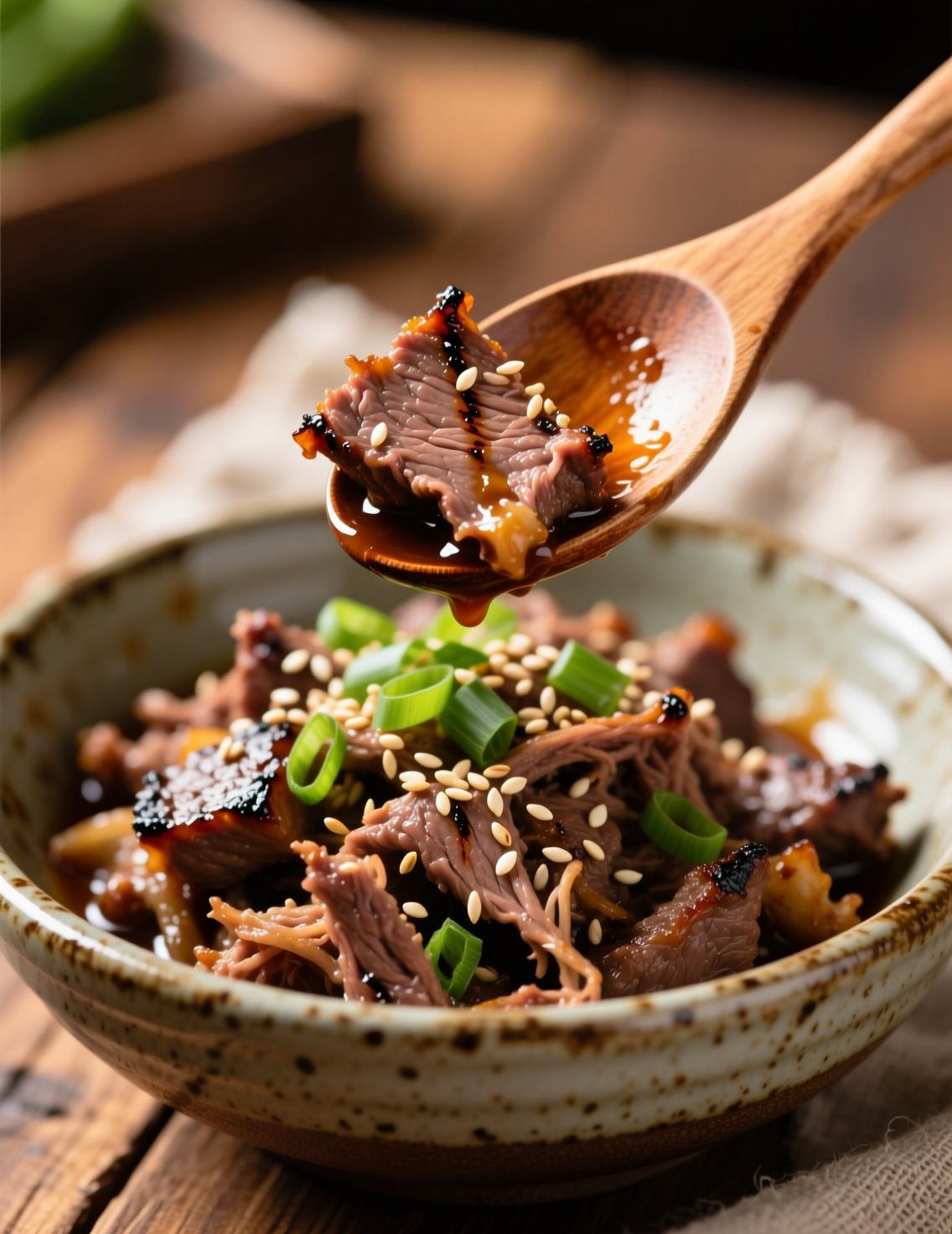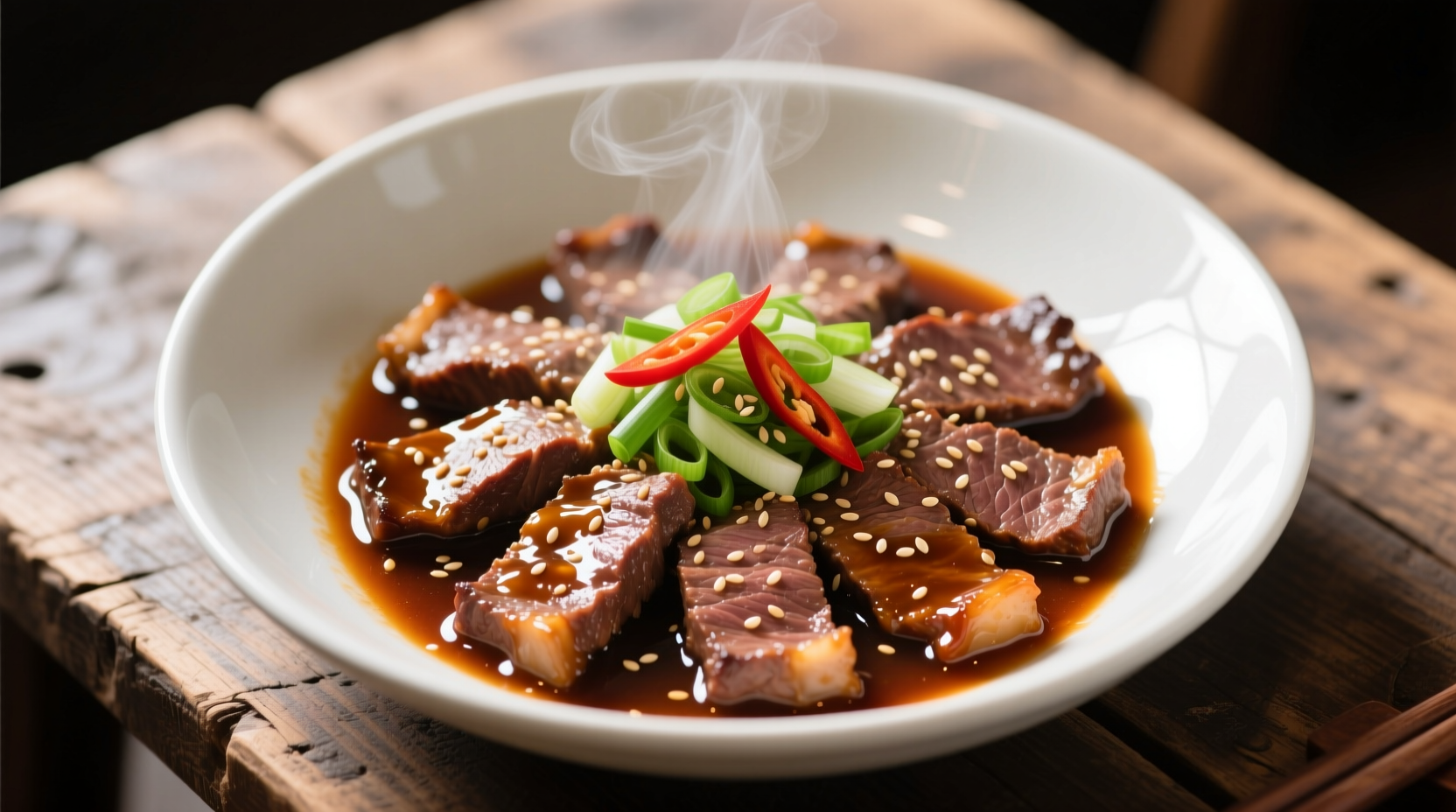Korean cuisine has a way of sneaking into your senses before you even realize it. Bulgogi is one of those dishes that feels deceptively simple, yet every bite carries a universe of flavor. Today, we’re diving deep into a Korean Ground Beef Bulgogi recipe for 6 servings, perfect for professional kitchens, meal preppers, or anyone who wants that umami punch without the fuss of slicing thin ribeye.
This recipe isn’t just about throwing beef into a pan with sauce. It’s about balance, technique, and understanding how flavors interact. Sweetness, saltiness, sesame aroma, and a touch of heat must harmonize. Getting that harmony right is what separates a home-style bulgogi from restaurant-quality.
Understanding Bulgogi: A Culinary Breakdown
Bulgogi literally translates to “fire meat,” a nod to its traditional grilling method over high heat. Historically, thinly sliced beef was marinated in a mixture of soy sauce, sugar, garlic, and sesame oil. The marinade isn’t just seasoning; it’s a tenderizer. The sugar and pineapple or pear juice in traditional recipes break down proteins, making beef tender.
Using ground beef is a modern twist, but don’t underestimate it. Ground beef absorbs marinade differently than slices. It cooks faster, and the fat content plays a huge role in flavor release. For professional chefs, choosing the right ground beef is crucial—an 80/20 lean-to-fat ratio is ideal. Too lean and the bulgogi dries out; too fatty and it becomes greasy.
Ingredients You Need (6 Servings)
- 1.5 pounds (680 g) of ground beef, 80/20 lean-to-fat ratio
- 1/2 cup soy sauce (low sodium preferred)
- 1/4 cup brown sugar or honey
- 3 tablespoons sesame oil
- 4 garlic cloves, minced finely
- 1 small yellow onion, grated
- 2 teaspoons freshly grated ginger
- 2 tablespoons gochujang (Korean red chili paste) – optional for subtle heat
- 1/4 teaspoon black pepper
- 2 scallions, chopped for garnish
- 2 teaspoons toasted sesame seeds
- Cooked short-grain rice for serving
Optional: shredded carrots, julienned cucumber, kimchi for added texture and flavor contrast.

The Marinade: Why It’s Your Flavor Backbone
Most people think marinade is just seasoning. Not true. In bulgogi, it’s the soul. The sugar, soy, and sesame oil create Maillard reaction magic when cooking. The minced garlic and ginger add aromatic layers. The onion juice contributes moisture and subtle sweetness.
Pro Tip: Let the ground beef sit in marinade for at least 30 minutes. You can even refrigerate for 2-4 hours. Don’t skip this—flavor penetration is key. Some pros even refrigerate overnight for maximum depth, though texture may slightly change with ground beef.
Cooking Technique for Ground Beef Bulgogi
Unlike traditional bulgogi that’s grilled, ground beef is usually cooked in a skillet. High heat is your friend. You want a quick sear that locks in juices. Too low, and the beef stews in its own liquid—losing the signature caramelized flavor.
- Preheat a large non-stick skillet or cast-iron pan over medium-high heat.
- Add a touch of sesame oil to prevent sticking.
- Add the marinated ground beef, breaking it apart gently. Avoid overcrowding the pan; cook in batches if necessary.
- Let the beef sit untouched for 1-2 minutes to brown before stirring.
- Once beef is mostly cooked, reduce heat slightly to allow sugar to caramelize without burning.
Notice that perfect bulgogi is slightly sticky, lightly caramelized, and not overly saucy. That’s a texture most people overlook. The contrast between tender, sweet beef and the slight bite of caramelization makes it addictive.
Balancing Flavors: Sweet, Salty, Umami, and Heat
Sweetness from sugar or honey shouldn’t dominate. It’s a subtle counterpoint to soy sauce saltiness. Sesame oil adds nuttiness, but too much can make it heavy. Gochujang gives a gentle kick. Remember: heat should enhance, not overpower.
Expert Insight: Taste as you cook. Ground beef marinades can concentrate quickly due to liquid loss. Add a teaspoon of water or beef stock if it thickens too fast. This keeps the flavor harmonious and prevents scorching.
Serving Suggestions for Maximum Impact
Korean meals are communal, and bulgogi is no exception. Serve over warm, fluffy rice. Add kimchi, sautéed spinach, or pickled radish on the side. For professional plating, drizzle a tiny bit of sesame oil over the beef and sprinkle sesame seeds and scallions.
Optional: Lettuce wraps are a classic. The freshness balances richness, creating a textural dance between tender beef and crisp greens. Some high-end kitchens serve bulgogi with microgreens or daikon slaw for modern presentation.
Common Mistakes to Avoid
- Using lean beef: Dries out quickly. Always aim for some fat content.
- Skipping marination: The flavor won’t penetrate. Ground beef absorbs differently than sliced, so timing matters.
- Overcrowding the pan: Prevents caramelization and can cause steaming instead of browning.
- High sugar, low heat: Sugar burns easily. Monitor heat closely.
Even seasoned chefs occasionally make these mistakes. The key is awareness and adjusting technique as you go.
Variations and Trends in Modern Kitchens
Ground beef bulgogi is incredibly versatile. Some chefs add mushrooms or bell peppers for earthiness and color. Others incorporate quinoa or cauliflower rice for a modern health-conscious twist.
Emerging trend: plant-forward bulgogi with mixed ground beef and finely chopped mushrooms or tofu. The marinade remains the same, but the texture changes. Professional kitchens are experimenting with sous-vide techniques for even more control over tenderness and flavor concentration.
Nutritional Insights
Ground beef bulgogi is high in protein and flavor but watch sodium content. Using low-sodium soy sauce is a simple adjustment.
For 1 cup serving:
- Calories: ~320 kcal
- Protein: 22g
- Fat: 18g
- Carbs: 12g (mostly from sugar in marinade)
Adding vegetables like spinach, carrots, or cucumbers increases fiber without compromising authenticity.

Frequently Asked Questions
What cut of beef is best for ground beef bulgogi?
Use 80/20 ground beef for best flavor and juiciness.
Can I use lean beef instead?
Yes, but it may dry out quickly and lose richness.
How long should I marinate the beef?
At least 30 minutes, ideally 2-4 hours for deeper flavor.
Can I make bulgogi ahead of time?
Yes, marinate overnight and cook just before serving.
Is Korean ground beef bulgogi spicy?
It depends on gochujang; you can omit for mild flavor.
Can I substitute beef with chicken or turkey?
Yes, chicken dark meat works best; turkey may need extra oil.
What’s the best cooking method?
Cook in a hot skillet or cast iron for quick browning and caramelization.
Should I add vegetables?
Optional, but carrots, cucumbers, or mushrooms add texture and color.
How do I avoid burning the sugar in the marinade?
Cook over medium-high heat and watch carefully; adjust liquid if needed.
How should bulgogi be served?
Over rice, in lettuce wraps, or with kimchi for authentic experience.
Chef Tips for Next-Level Bulgogi
- Layer flavors: Add a pinch of Korean chili flakes for subtle depth.
- Textural contrast: Toast sesame seeds separately to preserve crunch.
- Rest the beef briefly: Like steaks, letting it sit a minute off heat enhances juiciness.
- Experiment with sweetness: Brown sugar, honey, or Korean pear juice each gives slightly different caramelization.
Conclusion: The Art of Korean Ground Beef Bulgogi
Ground beef bulgogi for six is more than a meal. It’s a study in balance. Each ingredient plays a role, each technique matters. Caramelization, marination, and heat control transform simple ground beef into something transcendent.
For professional chefs or home cooks, the key takeaway is attention. Watch the beef, taste the marinade, adjust as you cook. The result is tender, flavorful, and satisfying. Whether served in a lettuce wrap, over rice, or plated elegantly, this dish proves that humble ground beef can carry the majesty of Korean cuisine.
Master this, and you’re not just cooking; you’re curating a culinary experience.

Mariana is a passionate home cook who creates delicious, easy-to-follow recipes for busy people. From energizing breakfasts to satisfying dinners and indulgent desserts, her dishes are designed to fuel both your body and hustle.
When she’s not in the kitchen, she’s exploring new flavors and dreaming up her next recipe to share with the Foodie Hustle community.

